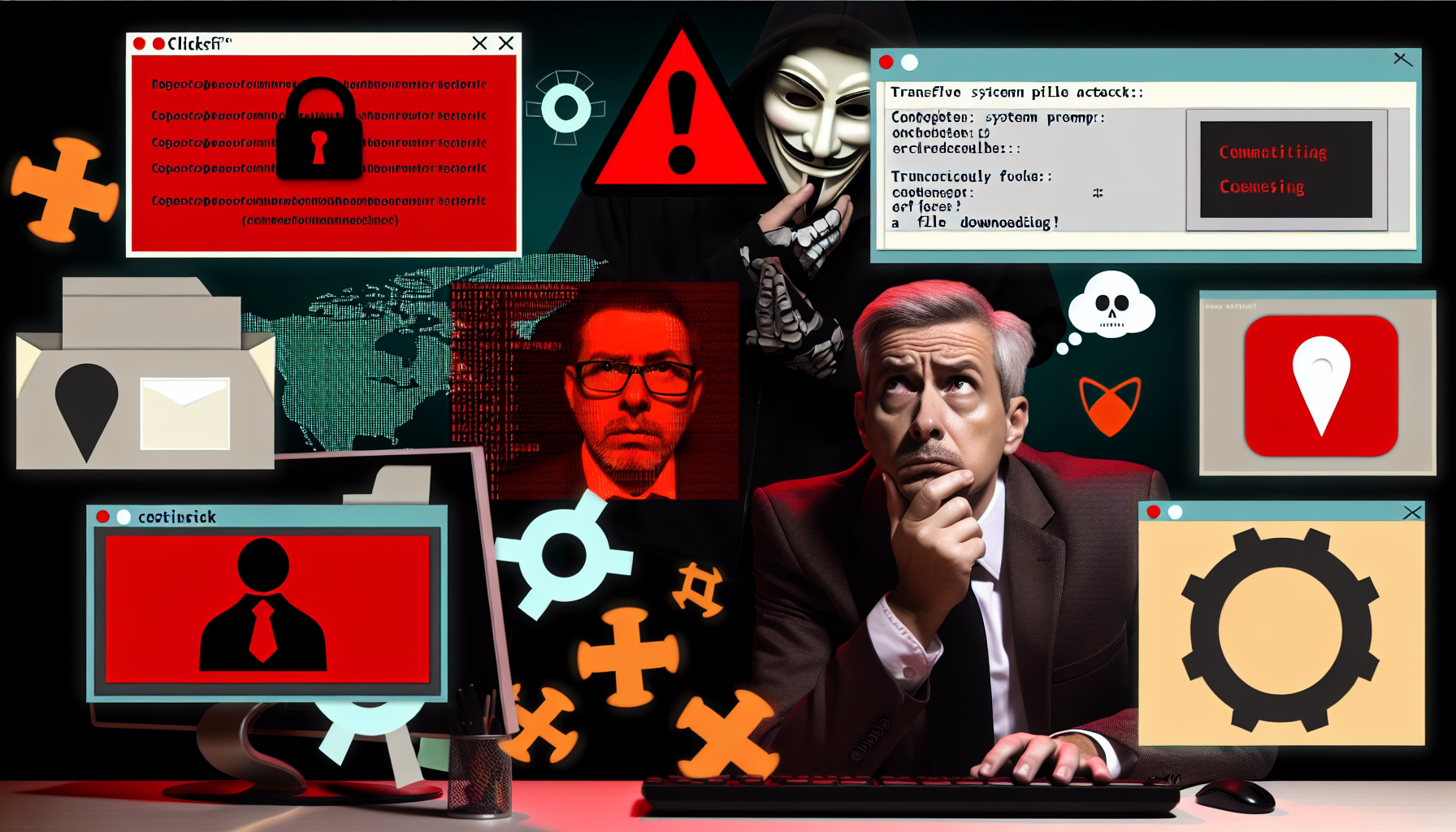Threat Overview
A recently published threat report by AlienVault on March 21, 2025, highlights a growing concern in the cybersecurity landscape: ClickFix, an emerging social engineering tactic that exploits users’ trust and technical inexperience. This method manipulates individuals into performing malicious actions under the pretense of troubleshooting or system maintenance. Attackers employ fake error messages, CAPTCHA verifications, or system prompts to deceive users into executing commands that compromise their devices.
ClickFix bypasses modern security solutions by convincing users to manually copy and paste harmful commands into the command line. This tactic has been observed in recent campaigns such as OBSCURE#BAT and Storm-1865, which have targeted various industries and regions. The attack vector has been detected in Field Effect’s telemetry, with attempts to deploy AsyncRAT and other forms of malware.
Understanding ClickFix
ClickFix leverages the human element to circumvent technical safeguards. By presenting seemingly legitimate prompts, attackers trick users into executing commands that download and install malicious software. This method is particularly effective because it does not rely on traditional exploit vectors like vulnerabilities in software or operating systems. Instead, it exploits the user’s willingness to follow instructions to resolve perceived issues.
Recent Campaigns
Two notable campaigns, OBSCURE#BAT and Storm-1865, have utilized ClickFix tactics to target unsuspecting users. These campaigns have been observed across multiple industries, including finance, healthcare, and manufacturing. The malware deployed in these attacks, such as AsyncRAT, provides attackers with remote access to compromised systems, allowing them to exfiltrate data, deploy additional payloads, or disrupt operations.
Mitigation Strategies
To mitigate the risks associated with ClickFix, organizations should consider implementing several key strategies:
- Restrict Command Line Use: Limiting access to the command line can prevent users from executing malicious commands, even if they are tricked into doing so.
- Deploy Advanced Threat Detection Solutions: Implementing advanced threat detection and response solutions can help identify and block suspicious activities before they result in a compromise.
- Enhance Email and Web Filtering: Strengthening email and web filtering mechanisms can prevent users from accessing malicious websites or downloading harmful attachments.
- User Training: Regularly training employees on cybersecurity best practices can help them recognize and avoid social engineering attempts.
- Maintain Up-to-Date Security Measures: Ensuring that all security measures, including antivirus software, firewalls, and intrusion detection systems, are up-to-date can provide an additional layer of protection against ClickFix attacks.
Conclusion
The rising threat of social engineering through fake fixes underscores the importance of a multi-layered approach to cybersecurity. By understanding the tactics employed by attackers and implementing robust mitigation strategies, organizations can better protect themselves against these emerging threats. Staying informed about the latest developments in the cybersecurity landscape is crucial for maintaining a strong security posture.
For additional information on ClickFix and how to safeguard your organization, please refer to the following resources:
-
Field Effect Blog: ClickFix – The Rising Threat of Fake Fixes
URL: https://fieldeffect.com/blog/clickfix-rising-threat-fake-fixes -
AlienVault Open Threat Exchange (OTX) Pulse
URL: https://otx.alienvault.com/pulse/67dd406c50b049fa09cf97b4
Discover more from ESSGroup
Subscribe to get the latest posts sent to your email.





